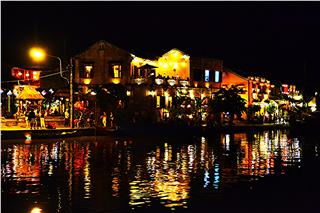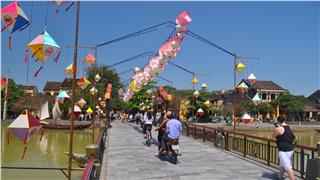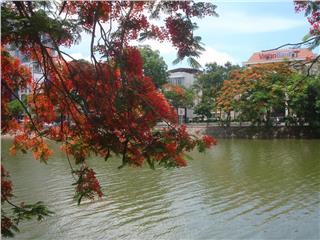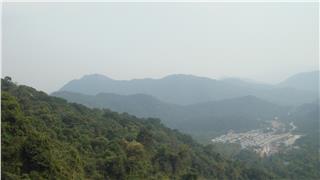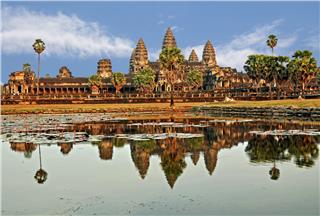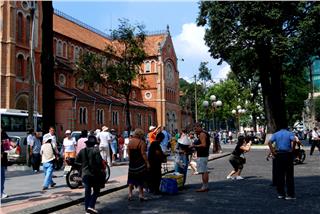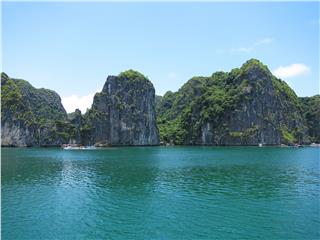Isles along the Dong Nai River
Thu, 15 Jan 2015 . Last updated Thu, 25 Jun 2015 08:59
-
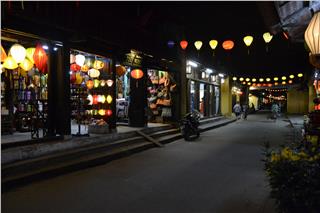 Hoi An travel to New Moon Festival 7231 viewed
Hoi An travel to New Moon Festival 7231 viewed -
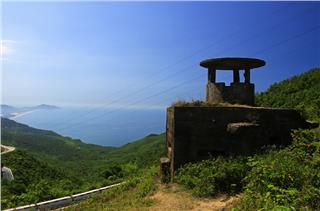 Vietnam War bunker near Da Nang 6705 viewed
Vietnam War bunker near Da Nang 6705 viewed -
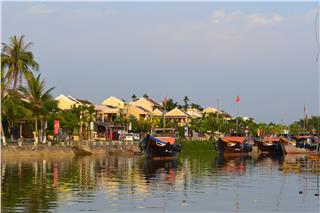 Ancientness of Hoi An ancient town 6618 viewed
Ancientness of Hoi An ancient town 6618 viewed -
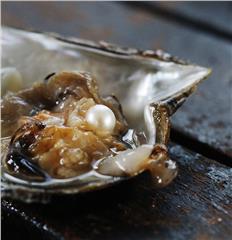 Discovering pearl in Phu Quoc Island 6123 viewed
Discovering pearl in Phu Quoc Island 6123 viewed -
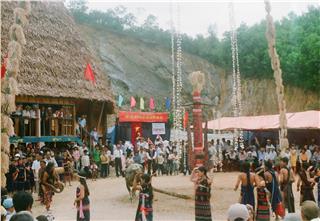 Discovering the Co Tu village in Quang Nam 5980 viewed
Discovering the Co Tu village in Quang Nam 5980 viewed -
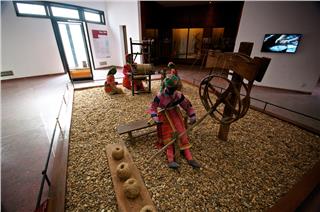 Cultural identity of ethnic groups in Vietnam Museum of Ethnology 5941 viewed
Cultural identity of ethnic groups in Vietnam Museum of Ethnology 5941 viewed -
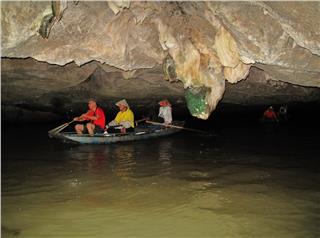 Visit Trang An complex in Ninh Binh 5844 viewed
Visit Trang An complex in Ninh Binh 5844 viewed -
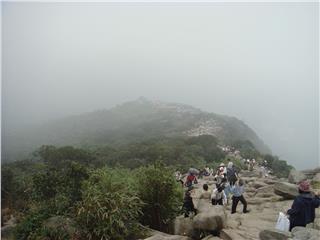 Yen Tu Pagoda and records of Vietnam 5813 viewed
Yen Tu Pagoda and records of Vietnam 5813 viewed -
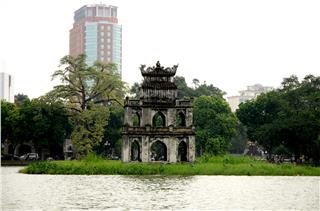 Hanoi Vietnam to Hoan Kiem Lake 5684 viewed
Hanoi Vietnam to Hoan Kiem Lake 5684 viewed
Dong Nai is a Southern province of Vietnam having the depth of history and developing economy. Coming here, visitors will have the chance to explore Dong Nai attractions to get some insight into this beautiful land.
The Dong Nai River in the East of Southern Vietnam begins from the South of the Truong Son mountain range, Lam Vien plateau, 1,936m higher than the sea level. It runs through Tan Phu District, Dinh Quan District, Vinh Cuu District, Bien Hoa City, Long Thanh District and Nhon Thanh District (Dong Nai Province) and then joins the flow of the Saigon River to form the Nha Be River. The confluence flows into the sea via Soai Rap estuary. The total length of the river is estimated at 610km.
The former name of the Dong Nai River was Phuoc Long as Dong Nai used to be Phuoc Long District (Tran Bien, Gia Dinh). Its left tributary in the West of Dinh Quan District is the La Nga River. The Dong Nai River has many waterfalls like Lien Khang, Gua Ga and Pong Gua. It runs through peaceful villages and isles which are now opened to tourists.
The Dong Nai River splits into tributaries in Bien Hoa to surround a bell-shaped land. It’s Pho Isle in Hiep Hoa commune, Southeast of Bien Hoa City, with an area of over 694 ha. Pho Isle is also called Dong Pho, Gian Pho, Cu Chau or Nong Nai Dai Pho. As recorded, commander Tran Thuong Xuyen led a group of refugees to Vietnam in 1679 and was allowed by the Nguyen Lord to settle in Dong Pho (today’s Pho Isle). He joined locals in building a big trading port here. Roads were expanded and markets were constructed to welcome foreign merchants.
Local people on Pho Isle practiced many crafts like weaving mats, planting mulberries, raising silkworms, making pottery products, casting bronze and so on. However, the battle between Tay Son troops and Nguyen Anh’s army in 1776 destroyed all the structures of Pho Isle. No traces can be found today. The glorious days of Pho isle – the most crowed trading port in the South - remained in the past only. Since the Liberation Day, the people on Pho Isle have turned it into the biggest rice farming area of Bien Hoa and formed a lot of beliefs.
Pho Isle is connected with Bien Hoa City via Gang Bridge and Rach Cat Bridge. When the former was put into operation, the two sides of the Dong Nai River were quite narrow with unspoiled beauty. The steel Gothic-style bridge has become a typical feature of Bien Hoa’s land and people. Ganh Bridge, 223,3m long, was built in 1903 as a large-scale structure in the South at that time. The bridge with a railroad line is an important part of the National Road No. 1. It connects the railway from Saigon to Nha Trang and facilities local trade with their partners in Saigon and Bien Hoa.
As recorded, Dai Giac pagoda was built in 1412. At first, it was just a small thatched pagoda but later in 1665, it was expanded to serve people’s greater worshipping demand. Dai Giac Pagoda is one of the three most ancient pagodas in Bien Hoa that won the title of National Historical Monument. According to the document kept in Bien Hoa Chapter of the Buddhist Sangha of Vietnam, 3 monks of the Rinzai School of Buddhism come to Dong Nai from the Central Region to popularize Buddhism in the 17th century. Thanh Nhac Monk and some Buddhists got to the areas by the Dong Nai River (Buu Hoa commune, Bien Hoa city) and built Long Thien Pagoda in 1664. Thanh Tri Monk followed immigrants to the Buu Long Mountain for rock mining and later, he built Buu Phong Pagoda in 1679. Thanh Dang Monk and some people sailed to Pho Isle (Hiep Hoa commune, Bien Hoa) and built Dai Giac in 1665.
Dai Giac pagoda covers an area of 3,000 m2 and has two brick gates. It was built in the shape of Chinese character “san”. The structure faces northwest, overlooking the Dong Nai River. There’s a huge bodhi tree planted by Monk Ding Tong on the 15th day of the 11th lunar month in 1939 and a statue of the Goddess of Mercy in the front yard. The pagoda has a garden at its back and on the left and a tower garden on the right. The main hall is actually a three-compartment worshipping house. In the middle compartment, we can see a wooden statue of Amitabha, a statue of Gautama Buddha and a statue of Maitreya.
A range of 49 oil lamps and 49 elaborately-carved statues of Medicine Buddhas is placed next to the door. The left compartment is where Bodhidharma is worshipped and the right one is for Guan Yu. The two altars for 5 Yamas and 2 judges are placed on the two sides of the compartment. The altar for chief monks who passed away here is behind the main hall. This is where the first chief monks of the pagoda are worshipped like Thanh Dang (34th generation), Phat Y – Linh Nhac, Giac Lieu – Thiet Truyen (35th generation), To An – Mat Hoang (36th generation) and so on. As you can see, Dai Giac Pagoda has so many statues of Buddha, horizontal lacquered boards, parallel sentences, reliefs and so on that depict a range of topics. All of them show us the excellent adroitness of sculptors in the past and reveal the traditional fine arts of the East of Southern Vietnam.
The temple is said to be built in 1700 after Nguyen Huu Canh’s death. His body was kept here before being buried in Quang Binh – his homeland. Locals still keep two lines of verses dedicated to him. “Le Thanh Hau reclaimed the land. His deeds will be remembered for good.” The temple was built in the shape of Chinese character “tian”, facing Dong Nai River in the Southwest. The main hall has exposed aggregate walls, fish scale tile roof and red tile floor. Its roof is decorated with a pair of dragons made of blue enameled ceramic and a pair of kylins. The main entrance of the pagoda has three doors, two of which are engraved with Chinese charaters honoring the deeds of Nguyen Huu Canh.
The inner hall has three rows of big pillars with a lot of parallel sentences. The horizontal lacquered boards are all engraved with big Chinese characters. The color of parallel sentences is intact despite the test of time. Patterns on traditional topics with glitter letters can be found right below the horizontal lacquered boards. The middle compartment of the main hall is where people worship the deity and his subordinates. The attire kept in the glass cabinet next to the altar is believed to belong to Nguyen Huu Canh. The front altar where people worship all the deities is decorated with reliefs of the four holy animals. Two rows of “bat buu” (Eight precious items in Buddhism) are placed in the middle compartment. Along the walls are the altars of other deities. Nguyen Huu Canh Temple is on of the historical monuments in Bien Hoa where the royal certificates for the deification of honored people are kept.
Dong Nai people also built a stele house to preserve the 300-year history of their land here. They held rituals on the 16th day of the 5th lunar month and the 1st day of the lunar month to pray for peace and commemorate the deeds of the founder of their homeland. Setting in this land, those people from former Tran Bien still remember their roots, culture and tradition of working hard with excellent dexterity. They stay opened-minded to learn the quintessence of other cultures and communities in Dong Nai – Gia Dinh to create their own identity. Pottery is part of that identity.
The first kiln in Tan Van was built in 1878. Later on, people started the craft of making jars for locals of the Cuu Long River Delta. Dong Nai and Song Be have become home to natives of different places. Each pottery workshop carries the feature of its owners’ homeland. Some are specialized in making bowls, dishes, cups, teapots, etc., some others make jars of all sizes and some make flower pots only. However, household pottery is the most popular. Pottery products of Tan Van don’t follow any traditional criteria for sizes or shapes. Locals use soft and light clay to make nice products that can satisfy any customer.
Most pottery makers in Tan Van have worked on clay for their entire life. Their skillful hands turn simple clay into round and durable jars. Each product is made with the potter’s soul and sweat. As for the potter, he can smell the clay every day and breathe life into it. It’s hard to explain the closely-knit relationship between Tan Van people and pottery. And these jars are the fruits of that relationship.
Honestly, all visitors to a pottery village want to make a product on their own. However, it’s difficult for an unskilled person to take part in the process. People place their jars in the shade to dry them gradually. When the jars become hard enough, they will be put into the kiln. Potters can have a lunch break now. They often wash their hands and legs in the Dong Nai River before going back home for lunch. The village now becomes quiet by the poetic river of Dong Nai.
Source: VTC10 - NETVIET

